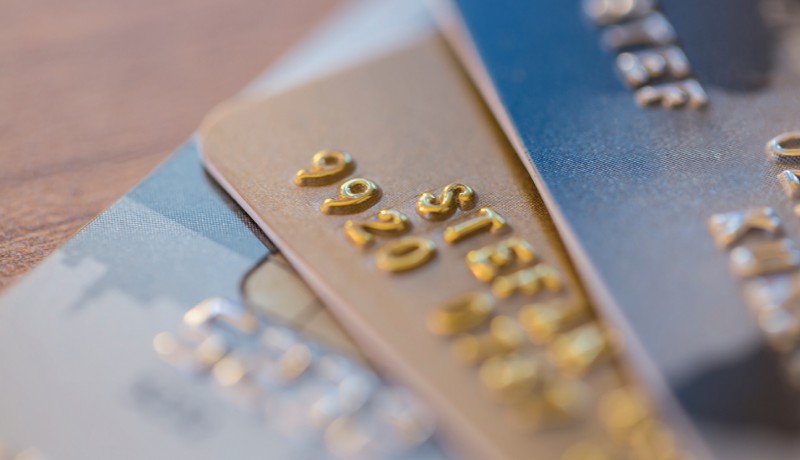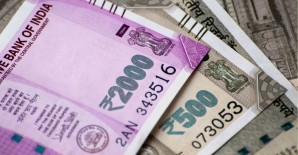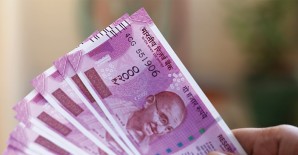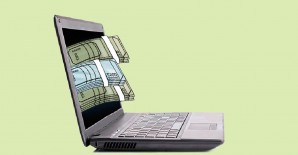
Money

Plastic money is making waves in the cashless market, says economist Priya Desai
Why are you late today, Rama?” enquired my friend. Pat came the answer from her maid that she had to visit the ATM to withdraw cash. Two ATMs in the area were out of order and she had to go looking for one that worked.
My friend persisted. “So, do you have an ATM card too?” The maid nonchalantly asked, “What’s new about an ATM card?” She continued, “Most of my neighbours have it. I find it extremely convenient to withdraw cash and it’s a great way to keep my hard-earned money out of my drunkard husband’s reach.” Evidently, while the maid wasn’t aware that ATM is an acronym for automated teller machine, she was confident about using it regularly. This incident set my friend, a septuagenarian, wondering why she still visited the bank to withdraw cash.
Today, a variety of cards are an integral part of personal banking. Most banks are working aggressively to boost the card culture; and in the battle of cards vs. cash, the former is emerging the undisputed winner. However, while millennials pull out their cards routinely for every transaction (digitally as well as at physical retail locations), silvers are yet to become adept at using plastic money.
What causes the hangup?
ATM, debit and credit cards have been around for over two decades. However, for long, many bank account holders did not opt for these cards. In the absence of widespread financial literacy, a large majority of bank account holders continued to stick with conventional banking methods, involving the use of cash transactions for all their payments. After demonetisation, the focus on a cashless economy catalysed the use of ATM/debit cards, and the younger generation rode the plastic money bandwagon with gusto. However, silvers showed relative disinterest in using cards and preferred to keep larger amounts of cash in their homes instead. For them, a major deterrent was the numerous stories of ATM/debit/credit card frauds they heard on various media channels and from people they knew. But now, there is a distinct, albeit slow, sign of change as the new wave of silvers enters the fray.
Types of cards
ATM, debit and credit cards are widely used by different strata of society, and they all perform different functions. According to the Reserve Bank of India, there were 860 million debit cards and 37.4 million credit cards operational in India in March 2018. Here’s a look at how they differ from each other.
ATM cards
These are associated with savings and current accounts. No fee is charged for an ATM card. There are over 200,000 ATMs across the country. These cards offer certain advantages, such as:
- Cash withdrawal from the account at any time, obviating the need to visit the bank during business hours.
- Cheques can be deposited via the ATM dropbox.
- Cash can be deposited at the ATM at any time.
- Account balance enquiry and passbook printing facility are available at the ATM.
Some charges are levied on financial and non-financial transactions at ATMs beyond permitted free transactions (that vary with different banks). ATM card users need to be aware of the daily withdrawal limit. They should also be aware of charges for extra transactions over the maximum number permitted by their bank. That said, isn’t it a great convenience to have the freedom to withdraw money from your account whenever you need it, without having to worry about keeping large amounts of money in your home? All public and private-sector banks, and most cooperative banks, have installed ATM machines throughout India, and people have the flexibility to withdraw money from any of them.
Debit cards
Debit cards are different from ATM cards; bank customers have to opt for them and will be charged an annual fee for using them. The debit card has the functionality of an ATM card, and more. Today, people are increasingly using debit cards as a preferred mode of payment for online as well as offline payments at retail establishments, for gym and school fees, for supermarket and hospital payments, and more.
Banks have collaborations with payment networks such as Visa, Master-Card, Diners, and Discover. RuPay is the domestic debit/credit cardspayment network launched in 2012 by the National Payments Corporation of India. RuPay debit and credit cards are cheaper and are issued by over 600 international, regional and local banks in India.
The common feature of all debit cards is that they’re linked to your account and entirely replace the need to carry cash. As a safety feature, the card has a PIN (personal identification number) as well as a predetermined daily spend limit. Users also receive a message on their mobile phone whenever any transaction is made using the card. While many silvers avoid the use of a debit card, it offers a number of features and benefits including:
- You don’t have to be worried about overspending, because your balance acts as the limit.
- Debit cards offer convenience as you can book air, train, bus and movie tickets and pay for food orders online from the comfort of your home.
- Most banks have ongoing offers and discounts for debit card purchases; this helps you save a significant amount of money. Many vehicle owners find the 2.5 per cent fuel surcharge waiver a definite plus.
- Each time you transact using your debit card, the bank sends you an SMS notification and email confirmation, allowing you to track your spend easily.
- Some debit cards offer personal accident cover and loss liability cover of varying amounts.
Different banks offer different categories of cards such as silver, gold, platinum, etc. The benefits and annual fees vary from one card to another and your salary range and creditworthiness will decide which card you are eligible for. High-net-worth individuals may be eligible for platinum and titanium cards that offer higher credit limits, and a larger number of benefits, rewards and cashbacks.
Credit cards
A credit card isn’t linked to the balance in an account, and has an annual fee attached to it. It allows you to make purchases and pay for them at a later date (generally within a timeframe of 45 days). It’s akin to a loan given to you by your bank. Failure to make the payment within the specified due date attracts interest and penalties. It’s important to have an understanding of how the payment cycles work to ensure you clear payments on time. Some features and advantages of credit cards include:
- They are an alternative to cash payments but with a predetermined limit.
- Annual fee is levied. However, some banks offer free-for-life credit cards to preferred customers on request.
- The cardholder has a grace period after which interest is charged on the amount due.
- Most credit cards also have an accident cover feature.
- You can accumulate bonus points against purchases made.
- Many credit cards offer discounts when you make purchases.
- Credit cards have a good emergency feature; you can withdraw cash at ATMs but have to pay certain fees for the withdrawal. It is a loan without hassles.
- Credit cards offer benefits such as free access to airport lounges and offers on shopping at taxfree stores.
All banks conduct a credit check before offering or issuing credit cards to their customers. Today, some senior citizens use their credit cards to pay for national and international travel.
Confidentiality is the keyword
Most silvers avoid using debit and credit cards because they fear the cards may get misplaced or that someone will defraud them and gain access to their accounts. It is true that credit card phishing, cloning and other scams occur and every debit/credit card holder needs to be aware of how these scams take place. This knowledge will help them avoid identity theft via phone calls, SMS and emails. Here are some ways to safeguard yourself:
- Ensure the card is kept in a safe place and no one other than you has access to it.
- Never divulge your credit card number, card value number (CVV), PIN and other sensitive, card-related information to anyone.
- In case of misuse or loss of card, use the hotlisting facility to inform your bank.
- Keep track of bank alerts; this will help in the early detection of potential credit/debit card frauds.
The new comfort zone
Digital technologies are the hallmark of the 21st century. This trend will only gather momentum in coming years and the world of personal banking is constantly drawn into this vortex of the technology revolution. ATM, debit and credit cards are good examples of this transformation.
In fact, some techno nerds believe cards too will become passé and be replaced by new technologies for banking transactions. All considered, there is no free lunch in this world and every advance has inbuilt benefits, risks, and costs. The different types of cards are not an exception to this rule.
Should silvers be deterred by this risk factor and stay away from plastic money, or simply be more alert and flag problems early on? A cautious and calculated approach to the use of these cards can open up a new comfort zone and an environment of freedom to carry out financial transactions with convenience and ease.
The author is an economist based in Mumbai
Photos: iStock Featured in Harmony — Celebrate Age Magazine July 2018
you may also like to read
-
Pension hike
The stage is set for a manifold hike in pension for private-sector employees with the Supreme Court quashing a special….
-
Budget 2019: ‘A big let-down’ for silvers
The verdict is out: Experts Harmony-Celebrate Age spoke to termed Budget 2019 ‘a big let-down’ for silvers. The only saving….
-
Silvers seek sops in health sector in Budget 2019
Relief in the healthcare sector seems to be uppermost in the minds of silvers on the eve of the unveiling….
-
Cheer for pensioners
The Union Government has launched Sampann (system for accounting and management of pension), a pension management software to aid and….







